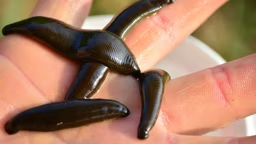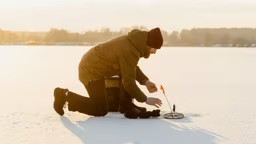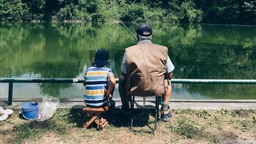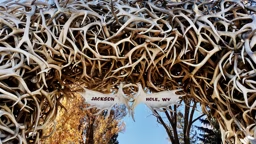
On many of my childhood fishing trips, the enjoyment began when I got to catch the bait. I remember the anticipation building after my dad and I set out the minnow trap in a creek and waited for the fish to swim into that glass container. After about 10 minutes, we would check the trap, and it usually contained plenty of minnows for catching bass and catfish. Trapping minnows is just one of the many fun ways for kids to collect live bait for their fishing trips.
Buying live bait from a bait-and-tackle shop is the easiest way, but letting kids get their own bait adds to the excitement of fishing and gives them a sense of accomplishment when they catch a fish on the bait they gathered – kind of like the feeling a fly-fisherman gets when he catches a trout on the fly he tied himself. Live bait can be found just about anywhere around your cabin.
Mother Nature’s bait shop has an abundance of creatures for kids to choose from, and the price is right (free!). The soil contains night crawlers and grubworms, while a nearby field will be loaded with crickets and grasshoppers. A creek flowing through your backyard is likely to harbor minnows, crayfish and frogs.
Bring the right tools
A few basic tools are needed to help kids collect their own bait. A good shovel for digging up night crawlers and grubs, and a container with a lid to hold the worms will be needed. A coffee can always worked well when I was a kid because it is about the right size for carrying around, plus I liked the can’s aroma. A butterfly net is great for catching grasshoppers, but I always enjoyed the challenge of catching these hopping insects by hand. The best container for grasshoppers and crickets is a cricket tube, although any plastic bottle will work in a pinch, as long as you cut slits in it so the insects can breathe.
Clear plastic minnow traps work best for capturing minnows in a stream. I recommend using a Styrofoam minnow bucket to hold your bait because it keeps the water cooler and better oxygenated than a plastic bucket. Since creek minnows live in highly oxygenated flowing water, they need fresher water than store-bought minnows in order to survive very long in captivity.
Where to look
Night crawlers and grubs are the easiest to nab. Usually after a heavy rain, you can merely walk along the rocky shoreline of a lake or the pavement of a road, driveway, or sidewalk and pick up night crawlers that have escaped the soaked soil for drier land. If it hasn’t rained for a while, then you will have to dig in spots such as compost, leaf or woodpiles (being careful of ticks). A vegetable or flower garden is also a good place to dig for worms, but don’t dig too close to the plants, of course. Nighttime hunting with a flashlight can add to the fun. Grassy locations usually hold grubworms, which are ideal for catching bluegill and trout. Make sure the kids use the grubs shortly after digging the worms up though. I once left grubs in a can for a couple of weeks, and when I decided to use them, I found out they had turned into june bugs.
Any weedy field will yield plenty of grasshoppers during summer and fall. The kids will get a chance to practice their stealth skills as they sneak up from behind to nab the hoppers by hand. The only drawback for kids when catching grasshoppers is the nasty black juice that the bugs secrete; it gets all over their hands. So, make sure you bring an old towel for everyone to wipe off with after a grasshopper hunt.
You can catch all the minnows you need for a couple of hours of fishing by crushing a couple of saltine crackers into a minnow trap and placing it in a shallow riffle where the current stirs up the crackers, or by suspending a trap from your dock to the lake bottom with a rope. The minnows will swim into the small opening of the trap to eat the crackers and will be unable to escape.
Crayfish can be found under rocks in the shallows of creeks where water flow is minimal. I still enjoy wading in a stream, picking up rocks, and trying to catch crayfish before they scoot under another rock. Make sure you teach your child how to grab the crustacean behind its pincers to prevent it from pinching the youngster.
The shoreline of a lake, pond or stream is the best area for catching small frogs. Look for these amphibians around lily pads, and have the kids try to sneak up behind the frogs to catch them by hand or with a small net. Be careful not to destroy lily pads and surrounding habitat. Be quick too, because frogs can be fast!
The next time the kids want to go fishing, start the excitement by planning a catch-your-own-bait outing. It’s a great way to get kids in touch with nature, and it creates another great cabin memory that they can pass along to their children.
Although he hunts for lures at tackle shops now, John Neporadny fondly remembers the fun he had catching crayfish, minnows and grasshoppers as a kid.










